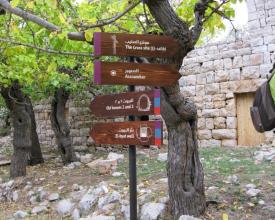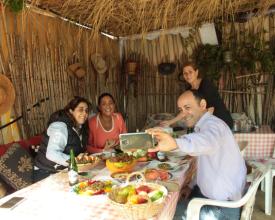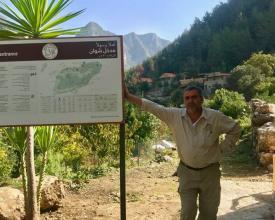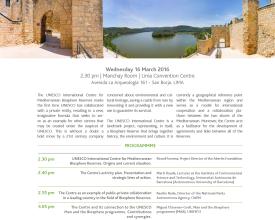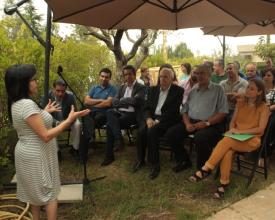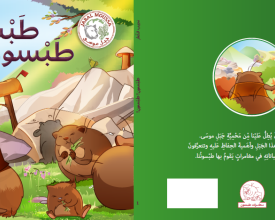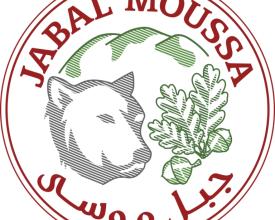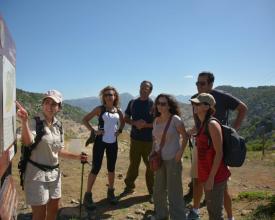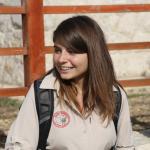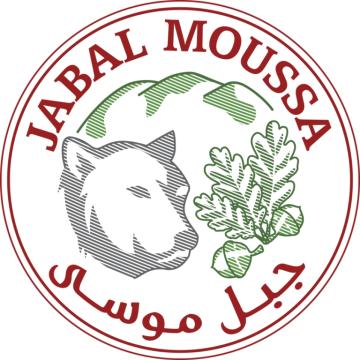
From threatened to thriving: how ecotourism saved Jabal Moussa mountain
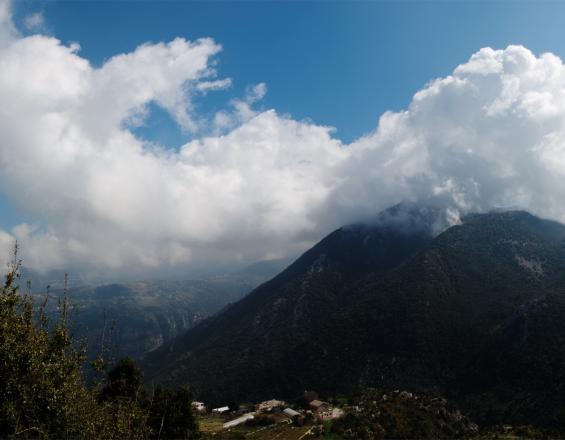
In 2007, following an attempt to blast a road in the heart of the mountain known as Jabal Moussa, the Association for the Protection of Jabal Moussa (APJM) NGO was established to protect the mountain from increasing pressures, within challenging socio-economic and political contexts. APJM negotiated and funded a lease contract with religious endowments to rent large swaths of the mountain, and Jabal Moussa was designated a UNESCO Biosphere Reserve in 2009. Inspired by the Man and Biosphere Programme, APJM launched a community-based ecotourism program the same year, engaging several local community members. From a previously neglected and threatened area, Jabal Mousa became a well conserved touristic destination, welcoming 20,000 visitors in 2017, and increasingly contributing to the wellbeing of its local communities. Despite the very fragile law enforcement framework, Jabal Moussa is today thriving due to the engagement of the local community and the support of the general public.
Contexto
Défis à relever
APJM was established in 2007, in a very challenging context, amid destructive activities ranging from illegal quarrying, chaotic constructions, unsustainable wood extraction, and unplanned road opening, disregarding the wealthy natural and cultural heritage of the region. Almost no conservation body had ever done any sustained work prior to 2007 locally, and APJM was struggling as an almost stand-alone conservation organization. Most of the core zone consisted of private lands with little legal recognition, no proper framework for law enforcement, and no financial support from the government.
According to a survey conducted by Saint Joseph University in 2009, people living permanently around Jabal Moussa suffer from the deficiency in job opportunities and from the low income generated by their jobs.
APJM found in the Man and Biosphere concept an answer to this challenging context, and sought various funding sources to overcome the lack of governmental funding.
Ubicación
Procesar
Summary of the process
Wrongly perceived as a complementarity, communication has played a key role in conserving APJM from the very beginning: effective communication engages locals, partners as well as donors, and allows the management to be collaborative. It is an essential part of the "hovering" approach of APJM, where communication skills are required with the different partners.
Through telling the story of how and why APJM was established, the first Ecotourism project was funded. The project was designed in a way to generate income beyond its lifetime (enhancing impacts and sustainability). Effective communication shed light on the project results, and played a role in generating more interest in Jabal Moussa story.
Building Blocks
Designing projects for sustainability through integration into the organization's strategy and analysis of local context
It has always been at the core philosophy of APJM, and as means of sustainability, that every project should generate impacts and be sustained beyond the life of the project, or its funding.
Therefore, while NGOs might fall into the trap of designing projects based on the donor's needs, APJM's projects are designed to directly answer the gaps identified locally. The needs were first identified in 2009 during a socio-economic survey describing the socio-economic profile of the local communities, or during scientific research done by experts, and were later on updated by APJM staff or experts.
Activities are subsequently planned to answer APJM's mission and vision, and fit into APJM's Management Plan and Strategy. The project management structure is designed to fit into the organizational chart of APJM. As activities often target or are implemented in partnership with local stakeholders, activities also build on existing local skills and know-how, and aim at their leverage.
Most project activities are therefore sustained beyond the project funding, on both financial and operation levels, and projects turn into programs, or sub-activities of programs.
Enabling factors
- Existing advanced surveys in different areas (socio-economic; natural heritage; cultural heritage)
- Willingness of local communities to be part of APJM's projects and activities
- Local staff familiar with the local context
- Clear management vision set by board members
Lesson learned
- Thorough survey (socio-economic, fauna, flora, cultural...) are essential prior to the development of any project
- Project activities should be developed to meet the NGO mission as well as the socio-economic needs
- Sustainability concerns should be addressed during the planning phase
- Project activities need to generate either income or any other type of benefit for the NGO as well as the local communities to be able to sustain it
Striving to be locally rooted, participative and adaptive, while globally connected
The "helicopter approach" has become part of our philosophy and is an important key to success in Protected Areas. As an NGO, we constantly hover between local and international, and we aim to be rooted locally, while universally connected.
We thrive to balance between local assets, skills, and needs, with international concepts and expertise, without the need to stop at any "intermediary".
We seek to be adaptive and collaborative in our management of the Reserve: we seek the guidance of locals to adapt techniques and recommendations to our local context.
Our staff and board members are predominantly local residents; we have direct links with local stakeholders, and we advance personal relationships over numbers in large scale surveys. On the other hand, we aim at adapting the international concepts of the Man and Biosphere Programme, and we seek to have an active role in regional and international networks, and to build partnerships with multilateral donors and international foundations.
We believe that by having been locally rooted, and internationally connected, we became trustworthy partners on both levels.
Enabling factors
Having a local team, knowledgeable of the area, is a prerequisite. Engaging in a transparent communication and a direct relationship with stakeholders of diverse backgrounds, was essential and took the team farther than relying on "intermediaries".
The willingness to learn from and contribute to regional and international networks, and having a team specialized in different aspects (development, conservation, communication...), as well as having encouraging counterparts (UNESCO and IUCN secretariats), allowed us to be connected internationally.
Lesson learned
The process of building and maintaining relationships on all levels can be wearisome and time consuming. It is however important to invest in it, for, on the long run, it is rewarding to all parties involved.
Being present on field is as important as being present at conferences: learning from the people on the field, and learning from other experiences is crucial, and can be achieved through thorough communication between team members.
The more targeted we are with our process, the more successful we get. For instance, we attempted to work once with the local farmers (non-targerted), inviting through bulk messaging to several important, yet non-targeted training sessions. The participation was modest, and the relationship with the farmers was not maintained.
In contrast, when we worked with beekeepers, we first started with individual visits to each of the 51 beekeepers, noting their needs, their scale of work, their techniques. A relationship was built. This led to the implementation of several successfull interventions, and the personal contact is regularly maintained.
Creating a relatable "brand image" for the Reserve through effective targeted communication
Effective communication has been a key factor in enhancing ecotourism and protecting Jabal Mousssa. The Reserve enjoys today a nation-wide recognition as a young, yet professional ecotourism destination. Public support has played a key role in putting pressure on the violations that have long been taking place.
Thanks to effective communication, Jabal Moussa is also today a reliable brand name: whether food and handicraft products, hiking packages, or tree seedlings, people are increasingly fond of the Jabal Moussa products, tagged with our logo and registered trademark.
Our mascot, the Rock hyrax (or "Tabsoun" in Arabic) a previously unknown peculiar animal, is the hero of 2 books of a children's book series. Whether the real-life animal or the costumed mascot, it is becoming increasingly popular among children and adults.
APJM keeps a close relationship with media stakeholders in Lebanon, and APJM team uses a variety of communication tools to reach its partners: annual report; social media; website; email communication; direct conversations; group meetings; feedback sheets...
While the message is unique, the form is adapted to the audience: locals, children, visitors, donors... Honesty and transparency are among the core NGO values.
Enabling factors
Over the years, APJM has built strong relationships with the media stakeholders, who are always the first to be updated and invited to events.
Loyal, consistent and personal communication with all partners (experts, donors, supporters).
The existence of staff members partly dedicated to communicating (written; social media...) is essential.
Professional media companies have at times supported APJM in perfecting the communication.
APJM has also made use of technology to enhance marketing and facilitate a two-way communication.
Lesson learned
Personal emails, and written letters, are more effective than mailing lists, and group sms.
Being responsive to inquiries, comments and feedback is essential.
People APJM collaborates with are its biggest supporters (donors, experts, local beneficiaries...); it is important to stay in touch with them after the collaboration is done.
Audio-visual support of good quality is highly important: pictures speak louder than words.
Impacts
10 years into the establishment of APJM, Jabal Moussa became a renowned ecotourism destination, offering diverse hiking and accommodation packages, and receiving wide media coverage. Local agro-food and handicraft products are manufactured in a centralized workshop by local women, and marketed under the brand name "Jabal Moussa" at an increasing pace. APJM today hires 10 local staff members, 6 guards, and collaborates with 3 nursery owners, 20 guides, 6 guesthouses, 20 women products manufacturers, 50 beekeepers, 20 farmers, and tens of local service providers.
From a conservation perspective, a significant part of the core area received legal protection, from the Ministries of Environment, Agriculture and Culture. An increase in dense forest areas was observed along the years since the establishment of APJM, according to a study done by MÁN Poyatos et al, in 2015. Three nurseries maintained in local villages contribute to the propagation of thousands of native forest species every year. Wildlife and archaeological surveys were conducted, and as a result: Jabal Moussa was designated a Global IBA; the endemic Salvia peyronii, claimed to have been extinct, was rediscovered thriving in Jabal Moussa; an uninterrupted series of human occupation was recorded since the Stone Age; several cultural sites were rehabilitated and/or surveyed.
Beneficiaries
Direct beneficiaries are: 10 local staff members, 6 guards, 3 nursery owners, 20 guides, 6 guesthouses, 20 women products manufacturers, 50 beekeepers, 20 farmers, and tens of local service providers. Indirect beneficiaries are 20,000 visitors/year.
Sustainable Development Goals
Story
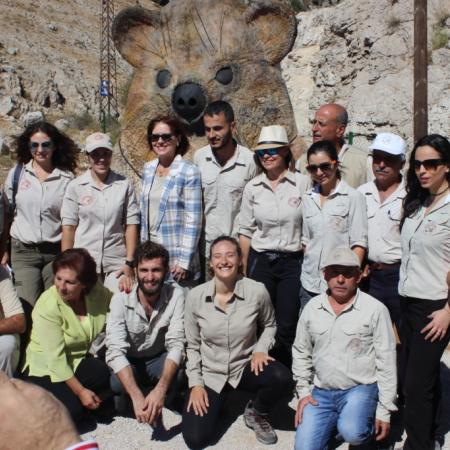
In 2007, APJM was established to protect Jabal Moussa from increasing pressures.
The mountain presented a unique natural and cultural heritage of regional importance, and was owned in large part by the Maronite Patriarchate and church endowments. However, Lebanese legislation did not recognize Nature Reserves on private lands.
APJM negotiated and funded lease contracts to rent large swaths of the mountain, and sought ways of their protection.
Following two years of surveys and conservation work, Jabal Moussa was designated a UNESCO Biosphere Reserve in 2009.
The UNESCO Man and Biosphere Programme constituted an inspiring concept, that encompasses the human dimension, in contrast with the classical restrictive conservation concept.
APJM sought a diverse range of funding sources, to overcome the lack of governmental funding and achieve its dual mission of conservation and development: project funding, income generating activities, and engagement of the private sector.
Ecotourism started with the funding of a project by the Italian Cooperation, which led to a program sustained over the years by the revenues it generated. Other funded projects fed into the program, supporting the expansion and diversification of the tourism packages. From a nearly unknown and threatened site, Jabal Moussa became a thriving site, receiving more than 20,000 visitors per year. Several locals benefit directly or indirectly from the Reserve, including local guards, guides, guesthouse owners, local workers and others.
Complementary programs also started with funded projects, such as the production of agro-food and handicraft products, and the growing of native tree seedlings. These programs contribute increasingly to the sustainability of the conservation stance, and to the development of the local communities.
Jabal Moussa Reserve gradually received recognition nationally through the legal protection of several plots by the Ministries of Environment, Agriculture, and Culture.
APJM also achieved a breakthrough in the mobilization of the private sector. A gala dinner is organized yearly, to invite the private sector to contribute to APJM's mission. APJM is thus able to cover its core costs from corporate donors.
The work of APJM is today well received among local communities and mostly recognized as one of development, contrary to the beginning, when certain locals went as far as assaulting the reserve premises, to cover their illegal quarrying activities.


